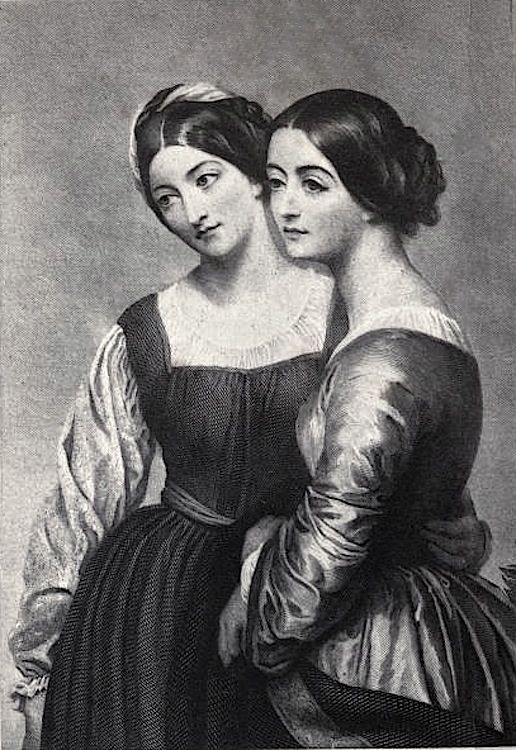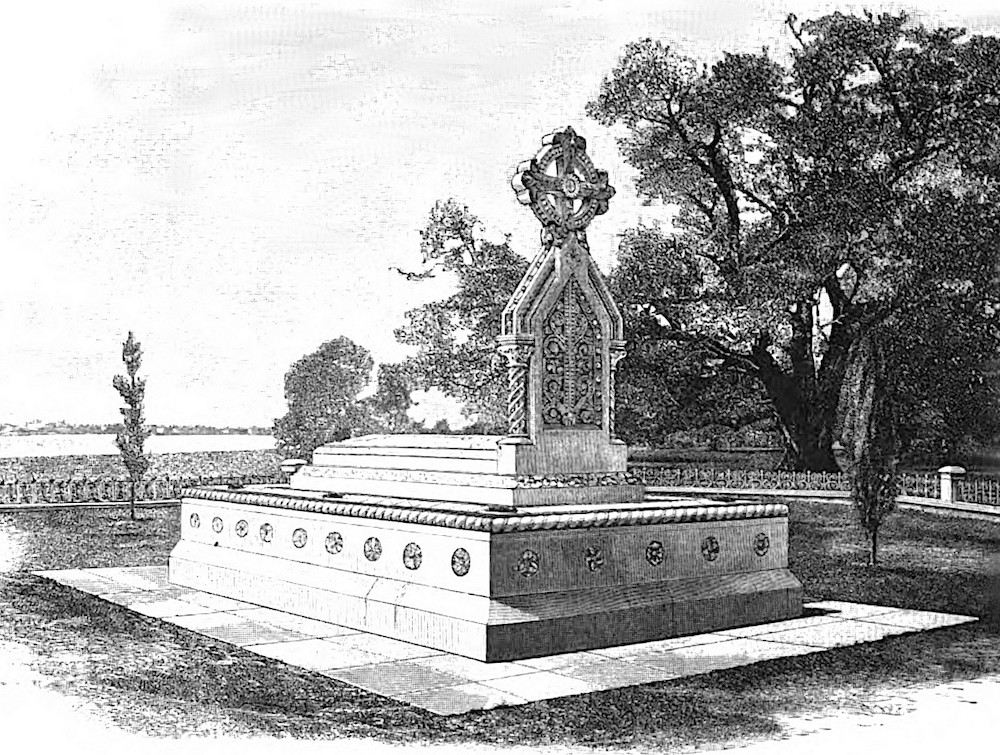Top two photographs by Oindrila Ghosh, historic images found by Jacqueline Banerjee, who also wrote the commentary and formatted the piece. You may use these images without prior permission for any scholarly or educational purpose as long as you (1) credit the person who photographed or scanned the image, and (2) link your document to this URL in a web document or cite the Victorian Web in a print one. [Click on the images to enlarge them.]


Tomb monument for Lady Charlotte Canning (1817-1861), in the north colonnade of St John's Church, Kolkata. It is beautifully made of inlaid and carved marble, designed by George Gilbert Scott, with sculptural work by John Birnie Philip. Charlotte Canning (née Stuart) was the wife of Charles, Lord Canning (1812-1862), the first Governor-General of India to be called Viceroy (after the uprisings of 1857). She was also the sister of the Marchioness of Waterford — better known now as the artist Louisa Anne Beresford, who most probably had a say in the design.

Charlotte (left) with her sister Louisa. Source: Hare I: frontispiece.
Charlotte died on 18 November 1861, after a long and tiring journey from Darjeeling (she had wanted so much to visit it), at the grand Government House in Calcutta. She was buried in the grounds of the governor's "country house" at Barackpore, where she had loved to tend the garden, but soon after the tomb monument was put in place, it was was moved to the interior of St Paul’s Cathedral in Calcutta (Figure 4), where it could be protected from the elements and seen by the public. An exact copy, minus the inlay, was made to take its place in the garden. The tomb was later (in 1913) relocated to its present position at St John's. The Viceroy's own words appear on the inscription on the front of the headstone:
Honours and praises written on a tomb are at best but vain glory; but that her charity, humility, meekness, and watchful faith in her Saviour will, for that Saviour’s sake be accepted of God, and be to her a Glory everlasting, is the firm trust of those who knew her best and most dearly loved her in life, and who cherish the memory of her, departed.
As Tracy Anderson has pointed out, these words reflect widely-held "concepts of ideal feminine virtue, charity, humility, and Christian piety" in contrast to the civic virtues ascribed to Canning on his memorial sculpture in Westminster Abbey (giving him belated credit for the "fortitude, judgement and wise clemency" during the 1857 uprising). But that was only to be expected at the time, and these, of course, were the sentiments of a husband — by all accounts, Canning was utterly bereft and never recovered from her death.

From a photograph of the monument at Barrackpore. Source: Hare, III:facing p. 168. Note the iron railings featuring entwined "C"s.
On the other side of the headstone (as seen top right) is the text, "I will ransom them from the power of the grave," from Hosea 13, 14. Philip Davies noted in the 1980s that the inlaid marble was "pitted by the monsoon rains" (84).
Related Material
- ""An Icon of Empire. The Angel at the Cawnpore Memorial" (Charlotte's involvement with the memorial there)
- "Too 'Civil' by Half" (Punch satirising the Viceroy's defence of the Sepoys)
- St John's Church, Kolkata (and see other monuments there, linked under "Related Material")
Bibliography
Anderson, Tracy. "The Lives and Afterlives of Charlotte, Lady Canning (1817-1861): Gender, Commemoration, and Narratives of Loss."The Afterlives of Monuments, ed. Deborah Cherry. Ed. Deborah Cherry. London: Routledge, 2014.
Davies, Philip. Splendours of the Raj: British Architecture in India, 1660-1947. London: Penguin, 1987.
Hare, Augustus J. C. The Story of Two Noble Lives, Being Memorials of Charlotte, Countess Canning, and Louisa, Marchioness of Waterford. Vol. I. New York: Randolph & Co. / London: George Allen, 1893. Hathi Trust. Contributed by the University of California Libraries. Web. 14 February 2021.
_____. The Story of Two Noble Lives, Being Memorials of Charlotte, Countess Canning, and Louisa, Marchioness of Waterford. Vol. III. New York: Randolph & Co. / London: George Allen, 1893. Hathi Trust. Contributed by the University of California Libraries. Web. 14 February 2021.
Created 14 February 2021